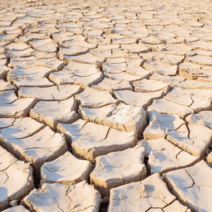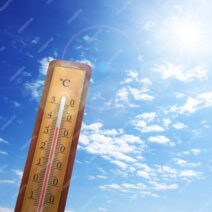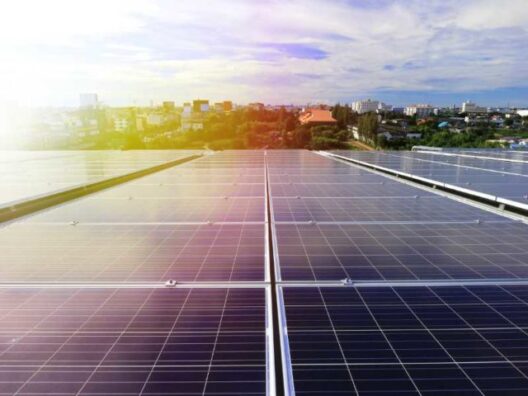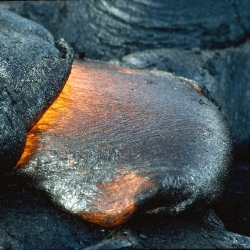The question of whether human activity is the primary driver of climate change has garnered significant attention across the globe. As climate science evolves, it becomes increasingly vital to dissect the data underpinning this phenomenon. The complexities of climate systems are interwoven with variables that include natural fluctuations, greenhouse gas emissions, and anthropogenic activities.
Climate change is not a monolithic issue; it encapsulates various elements such as temperature variation, sea-level rise, and extreme weather patterns. The task before us lies in elucidating the intricate relationships among these factors and discerning the human influence implicated in their acceleration.
To analyze the causative agents of climate change, one must begin with an examination of greenhouse gases (GHGs). Carbon dioxide (CO2), methane (CH4), and nitrous oxide (N2O) are the primary GHGs emitted through human activities. Carbon dioxide, primarily derived from fossil fuel consumption, industrial processes, and deforestation, has witnessed exponential growth since the advent of the Industrial Revolution. Data indicates a surge in atmospheric concentrations, surpassing 400 parts per million (ppm) for the first time in millions of years. This increase is alarming and is emphatically linked to anthropogenic causes.
In contrast, natural sources of GHG emissions exist, including volcanic eruptions and natural decay processes; however, the volume of emissions generated by human activities far eclipses these natural contributions. For instance, since the late 18th century, approximately 70% of carbon dioxide emissions have been attributed to human actions. The juxtaposition of these figures illustrates the disproportionate influence of anthropogenic sources in the current context of climate change.
Beyond the quantitative aspects of emissions, qualitative data further elucidates the human imprint on climate dynamics. Climate models projecting future warming scenarios are largely predicated on varying levels of greenhouse gas emissions, which are more pronounced in scenarios that include human influence. Without factoring in anthropogenic emissions, climate projections demonstrate a markedly different trajectory, often aligning closer to historical temperature patterns rather than the alarming trajectory observed today.
The interplay of human activity and climate change encapsulates a broader spectrum of influences, including land use changes and agricultural practices. Deforestation not only reduces the planet’s capacity to sequester carbon but also contributes to land degradation, perpetuating a cycle of increased carbon emissions. Agricultural practices, particularly livestock production, release considerable methane and nitrous oxide—each possessing a global warming potential far exceeding that of carbon dioxide.
Another dimension of this discourse is the urbanization phenomenon that has transformed natural landscapes into sprawling metropolises. Urban centers often create heat islands, where localized temperatures rise significantly compared to surrounding areas, exacerbating the impacts of climate change. Infrastructure, energy consumption patterns, and transportation systems considerably influence greenhouse gas emissions, reinforcing the conclusion that human activity is a significant driver of climate change.
In contrast to the robust evidence supporting human causation, arguments positing that climate change is primarily a product of natural cycles have gained traction, particularly in political rhetoric. While natural factors undeniably contribute to climate variability, such as solar radiation fluctuations and volcanic activity, paleoclimate data distinctly demonstrates that current rates of change are unparalleled in the context of Earth’s geological history. This unprecedented alteration in climate patterns aligns closely with increased greenhouse gas emissions, thereby reinforcing the anthropogenic narrative.
Analyzing historical climate data offers vital context. Proxy data, derived from ice cores, tree rings, and sediment layers, provides insights into past climate conditions. This data reveals that while natural changes in climate have occurred through periods of warming and cooling, the current rate of temperature increase is significantly accelerated compared to historical trends. The paleoclimate evidence suggests that both natural and anthropogenic influences are at play, but it crucially points to the contemporaneous human-induced factors as being overwhelmingly dominant.
Socioeconomic factors also warrant scrutiny. Economic growth, particularly in the form of industrialization and globalization, has precipitated a surge in greenhouse gas emissions. Developing nations are often caught in a paradox—seeking economic advancement while grappling with the environmental ramifications resulting from fossil fuel dependency. A transition to renewable energy sources is imperative in mitigating climate impacts, yet it remains stymied by economic and political challenges.
The symbiosis between environmental policies and individual behaviors presents yet another layer of complexity. Collective action, whether through sustainable practices or advocacy for legislative reform, is essential to addressing climate change effectively. Public awareness campaigns elucidate the responsibility of both individuals and governments in combating climate change. Although scientists emphasize data-driven approaches, societal engagement is pivotal in enforcing change.
In summary, the mounting evidence underscores the likelihood that human activities are instrumental in catalyzing climate change. The interrelation of greenhouse gas emissions, anthropogenic land use changes, and urbanization articulates a narrative of causation that is difficult to refute. While natural climate variability exists, the prevailing trends clearly indicate an urgent need for remedial action. As we stand at the precipice of climate catastrophe, understanding and acknowledging the human role is not merely a scientific exercise but a moral imperative to secure the planet for future generations.







